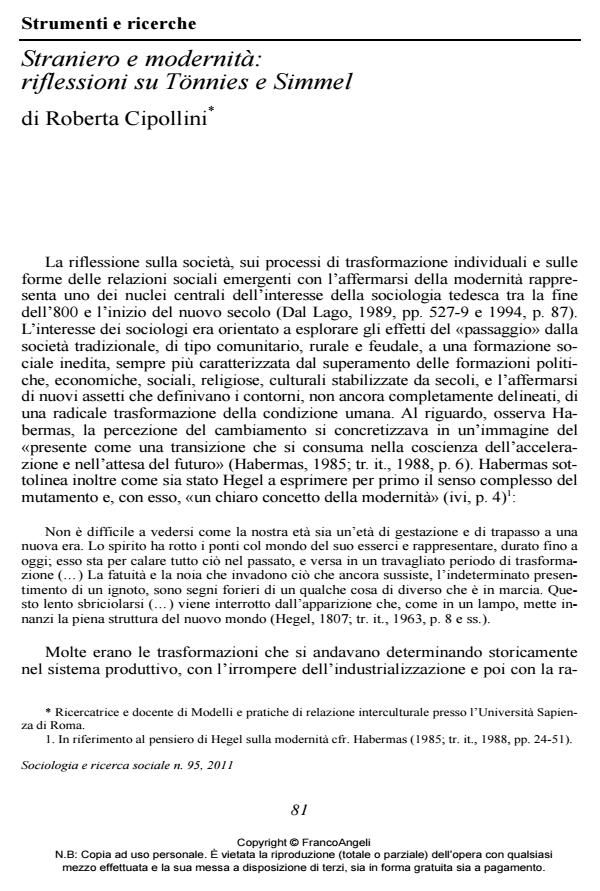The Foreigner in Modernity: Considerations on Tönnies and Simmel
Journal title SOCIOLOGIA E RICERCA SOCIALE
Author/s Roberta Cipollini
Publishing Year 2012 Issue 2011/95
Language Italian Pages 22 P. 81-102 File size 238 KB
DOI 10.3280/SR2011-095005
DOI is like a bar code for intellectual property: to have more infomation
click here
Below, you can see the article first page
If you want to buy this article in PDF format, you can do it, following the instructions to buy download credits

FrancoAngeli is member of Publishers International Linking Association, Inc (PILA), a not-for-profit association which run the CrossRef service enabling links to and from online scholarly content.
Between the late 1800s and the early 1900s, sociologists in Germany focused their interest on the beginning of modern times, the increase in social diversification, the affirmation of an individualistic orientation and, in particular, of metropolises and the appearance of new figures in urban spaces. Tönnies and Simmel concentrated their studies on the social figure of the foreigner as a metaphor of modernity and, though through different cognitive approaches, defined a strongly converging social representation. In both authors we find that the foreigner’s ambivalence is based on traits such as lack of fixation in social space, mobility, freedom, individualistic orientation and objectivity. Their considerations differ however in regards to the perception of this figure as being an isolated individual or referred to as a «type»: in Tönnies we see the first orientation, whereas Simmel believes that the foreigner is perceived through reference to a social «type», thus with a more structured representation. In such a way Simmel anticipates a theme that will later be further developed by sociology and social psychology.
Roberta Cipollini, Straniero e modernità: riflessioni su Tonnies e Simmel in "SOCIOLOGIA E RICERCA SOCIALE " 95/2011, pp 81-102, DOI: 10.3280/SR2011-095005